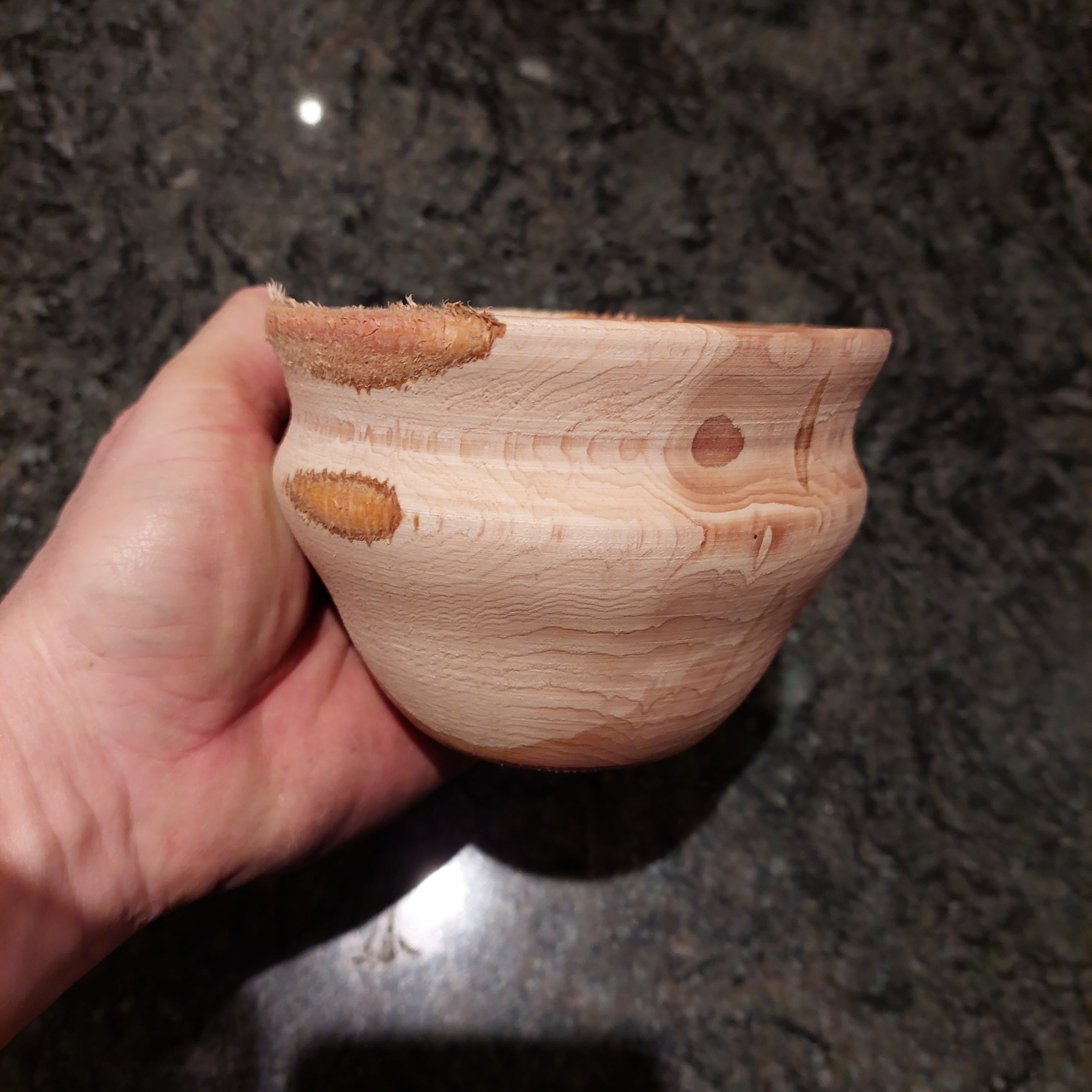Sculpted in … Wood?
Or maybe it should now be Turned in Timber. On one of my courses in 2023 a guest was talking about a previous business he ran, where his wife taught weaving and he made looms. “Actually,” he says, “I’ve got an old lathe, some wood, maybe a bandsaw - know anyone who might want them?”
So of course I now have a lathe, bandsaw, lots of wood and assorted bits and bobs in the garage. My stone studio is not at home, so over the winter and having been laid low after some surgery last year I have been doing quite a bit of woodturning. It’s something I’ve often fancied having a go at, and I can confirm that I really enjoy it. There was quite a learning curve, and I have consulted YouTube regularly, something I never did when teaching myself to carve stone. My lathe, in full working order, is pretty ancient and many of the available videos use far more modern equipment so I have had to work stuff out as I have gone along, which is exactly how I like to work. The lathe is, for those who like this sort of detail, an Arundel J4 mk2 junior, manufactured in Newark, Nottinghamshire, UK in the late 60s or early 70s. It’s beltdriven by an old fridge motor! I’ve added a modern safety cut-out but otherwise it is still pleasingly primitive. For example, to change speed you move, by hand, the drivebelt along to a different pair of drive wheels.
My first effort - a dry bud vase, yew.
I won’t be giving up stonework, but I do enjoy this. It’s a very different challenge. It should have been obvious to me, but I’ve realised that everything has to be rotationally symmetrical. This limits what can be made, but any limitation in art forces creativity and exploration, and I’ve been loving a new challenge. There’s a lot of fun to be had looking at a piece of wood and thinking, what can I make with this?
Deco bowl, ash.
Thumb pot, elm.
I was given an assortment of dried timber, and am steadily working my way through that. I have also managed to acquire some wet, or green timber - straight off the tree. This works very differently, and the way I am choosing to do it after not much research is to cut to a rough shape and then leave the piece to dry for several months. Shrinkage and cracking will ensue, hopefully, adding real character. We will see!
On the lathe, ready to turn - part of a yew tree that fell in Bampton churchyard just seven days prior to going on the lathe.
Green yew bowl, ready for the drying process. It may well crack and be artfully mended with gold wire or waxed cotton thread.





